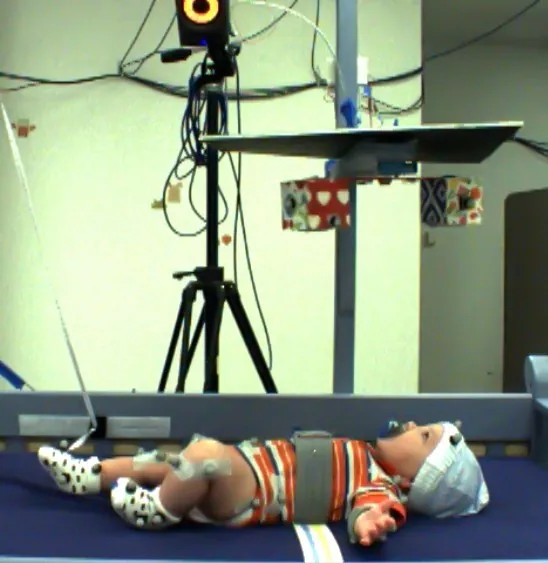
AI Unveils the Secrets of Infant Movement: How Babies Learn to Engage with the World
2024-10-01
Introduction
Recent breakthroughs in artificial intelligence and our understanding of infant behavior illuminate an astonishing journey: how infants evolve from random, exploratory movements to intentional actions. Historically, research has often focused on the spontaneous movements of infants, categorizing them into fidgety and non-fidgety actions. However, the critical question remains - how do infants purposefully engage with their environment?
Groundbreaking Study
A groundbreaking study conducted by researchers at Florida Atlantic University revisits the classic baby-mobile experiment, which has been a staple of developmental research since the late 1960s. By attaching a colorful mobile to an infant’s foot and monitoring their movements, researchers are able to observe the crucial link between an infant's actions and their surroundings. This innovative setup allows scientists to delve deeper into how infants learn to control their movements and influence the world around them.
Methodology and Findings
The researchers employed a state-of-the-art Vicon 3D motion capture system to analyze the intricacies of infant movement in various phases of the experiment. By applying sophisticated AI techniques, they sought to reveal which methods most effectively captured the subtle changes in infant behavior. Their published findings in Scientific Reports highlight that AI could be a game-changer in understanding early developmental stages.
AI and Infant Movement Analysis
Among the various AI models tested, the deep learning architecture known as 2D-CapsNet demonstrated the highest success, achieving an impressive accuracy rate of 86% in analyzing the movements of the infants' feet. This is particularly intriguing as the study revealed that movements of the feet exhibited the most significant variation across different experimental stages. Notably, the researchers discovered that the feet are essential for how infants interact with their environment - a remarkable finding emphasizing that “feet first” is more than a catchy phrase; it encapsulates how babies begin their journey of exploration.
Increased Exploratory Behavior
What’s even more captivating is the researchers’ discovery that infants showed increased exploratory behavior after being disconnected from the mobile. This loss of control prompted a newfound eagerness to interact with their surroundings in search of reconnection. Interestingly, some infants retained movement patterns reminiscent of their earlier interactions, indicating that they may have grasped the relationship between their movements and the mobile's responses.
Challenges in Infant Research
Yet, the challenges of studying infants cannot be overlooked. Unlike adults, infants cannot verbally communicate their thoughts or intentions, making it difficult for researchers to interpret their actions. This is where artificial intelligence becomes indispensable. By meticulously analyzing even subtle changes in movement, AI offers insightful revelations into what infants may be thinking and learning before they acquire verbal skills.
Conclusion
As the researchers point out, understanding the nuances of how infants connect with their environment could pave the way for better assessments of infant behavior, ultimately aiding in early risk identification for developmental disorders. This innovative fusion of developmental psychology and artificial intelligence signals a new era in understanding infant learning, potentially transforming how we approach infant development and care. As we continue to explore the powerful capabilities of AI in this field, one thing is clear: the journey of a baby discovering their world starts from their feet.
 Brasil (PT)
Brasil (PT)
 Canada (EN)
Canada (EN)
 Chile (ES)
Chile (ES)
 España (ES)
España (ES)
 France (FR)
France (FR)
 Hong Kong (EN)
Hong Kong (EN)
 Italia (IT)
Italia (IT)
 日本 (JA)
日本 (JA)
 Magyarország (HU)
Magyarország (HU)
 Norge (NO)
Norge (NO)
 Polska (PL)
Polska (PL)
 Schweiz (DE)
Schweiz (DE)
 Singapore (EN)
Singapore (EN)
 Sverige (SV)
Sverige (SV)
 Suomi (FI)
Suomi (FI)
 Türkiye (TR)
Türkiye (TR)